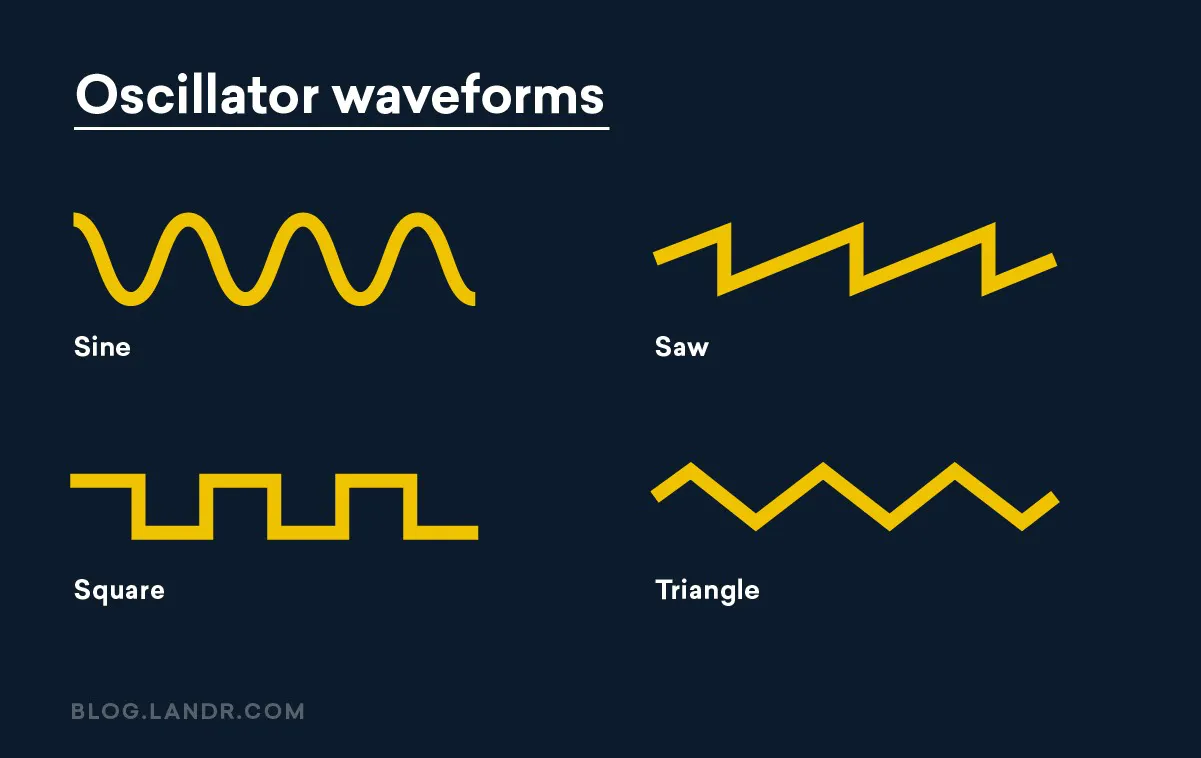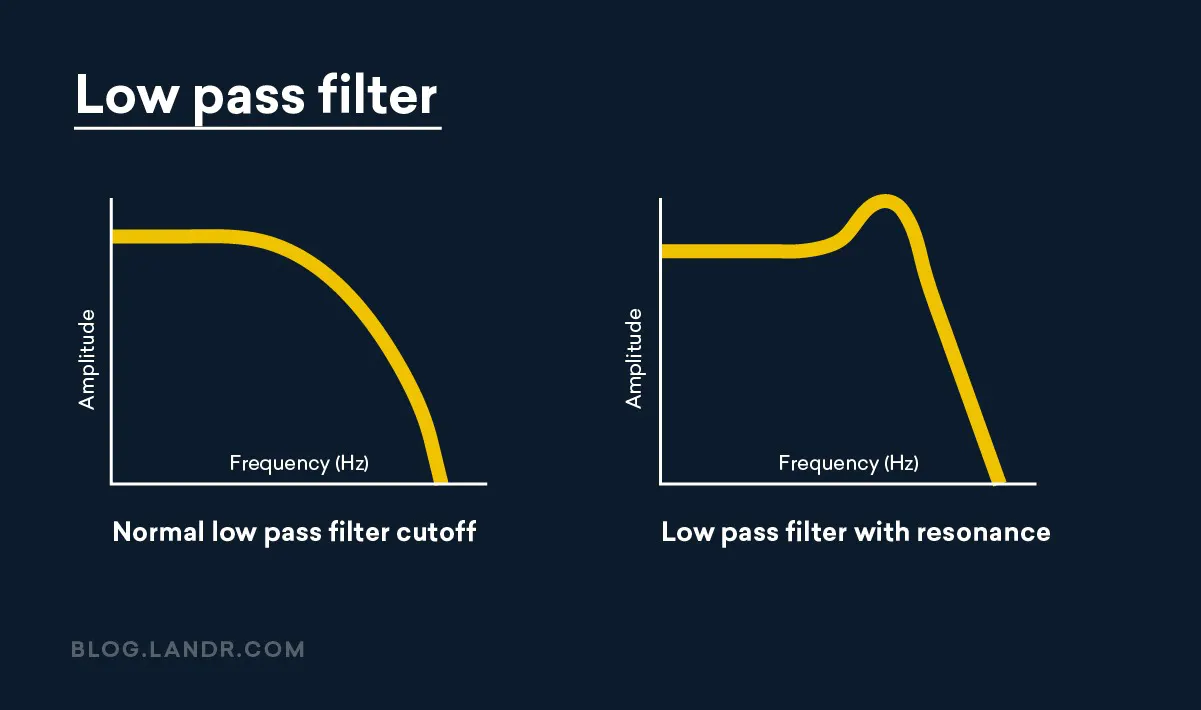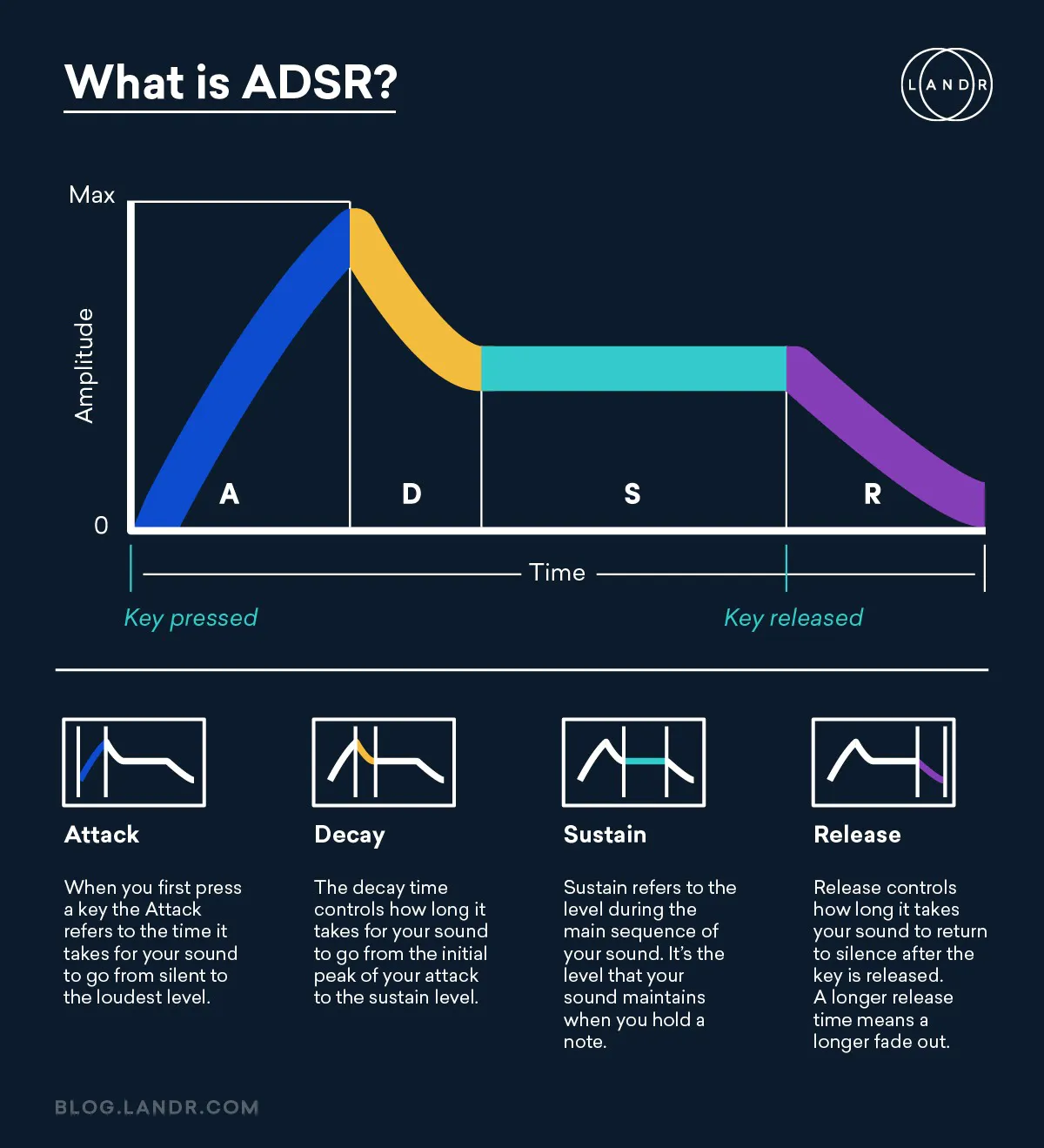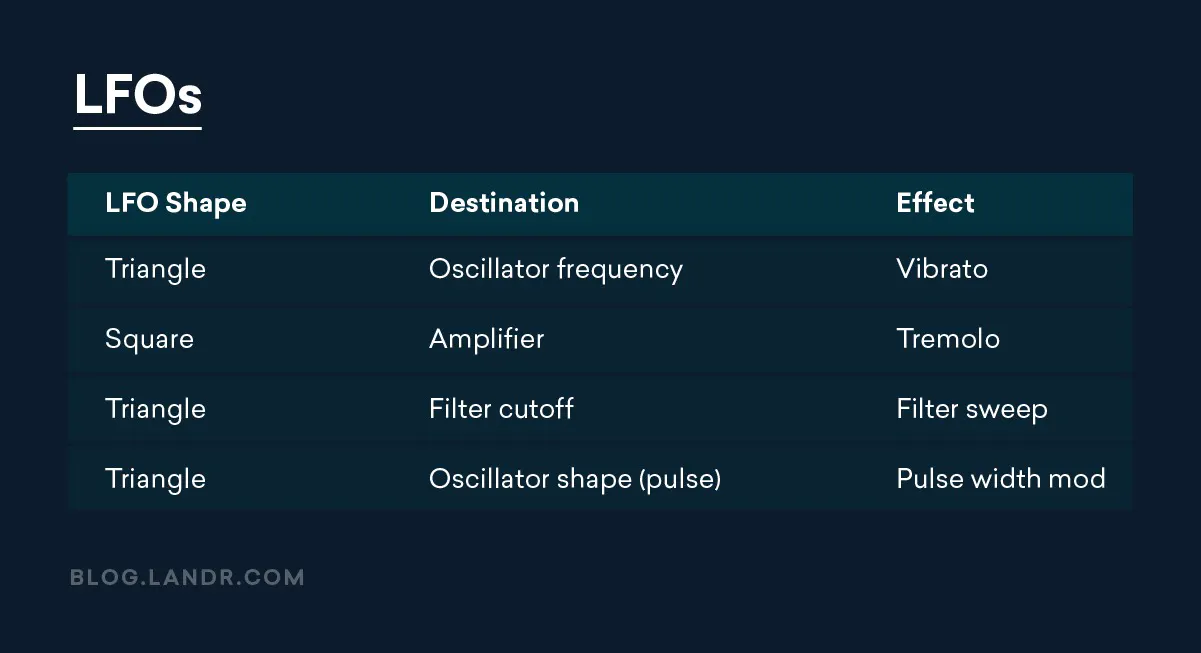Synthesis
Usually when people talk about Synthesis they mean Subtractive Synthesis, which is what this note is about, but there is also Additive Synthesis.
Subtractive Synthesis is a method of synthesizing musical timbres by starting with a waveform that contains lots of harmonic content and filtering it down using a filter and other processes. The rich harmonic waveforms I’m talking about are simple shapes like saw waves and square waves.
The usual architecture or chain of synthesis is: Oscillator → Filter → Amplifer aka. Volume → FX. These steps are then controlled either by Envelopes or LFOs:

Oscillator
Your synth sound starts at the oscillator. Even though it’s only the beginning, the oscillator settings you choose have a big effect on the sound of your finished patch.
Most synth oscillators offer a choice of several waveforms. The most common ones are:
- Sine
- Square
- Saw
- Triangle

Filter
The next step in the signal chain is the filter. This is where the “subtracting” really takes place. Many synths offer multimode filters, but the most common filter type in a subtractive synth is a low pass filter.
Filtering out these high frequencies dramatically changes the sound. Each frequency position of the low pass filter reveals a different harmonic character in the original oscillator.

Amplifier
The next component in a subtractive synth is the amplifier. This is the part that brings the signal up to a level that’s strong enough to connect to other gear like a mixer or audio interface.
Envelope
Envelope generators are one of the ways that you create change over time in your subtractive synth patch. They’re absolutely essential to crafting compelling sounds with subtractive synthesis.
Many synths contain a few of them, but the most common configuration is one envelope that acts on the amplifier and another that acts on the filter.
An envelope consist of Attack, Decay, Sustain and Release (aka. ADSR):

LFO
The last key piece of the subtractive signal chain are the LFOs. LFO stands for low frequency oscillator. They’re similar to regular oscillators—with a twist.
These oscillators have shapes just like the ones in your main signal generators. But they operate at a much lower frequency—so low that you wouldn’t necessarily hear it as a musical tone if you directly listened to their output. Instead, LFOs create repeating modulation in your synth sound.
You can connect LFOs to so many parameters in your synth. To help you get an idea of the outcomes of an LFO, here are some common routing options that produce well known effects:

Relevant Note(s): Analog Synthesizer Wavetable Synthesizer Connecting Hardware Synthesizer Sampler